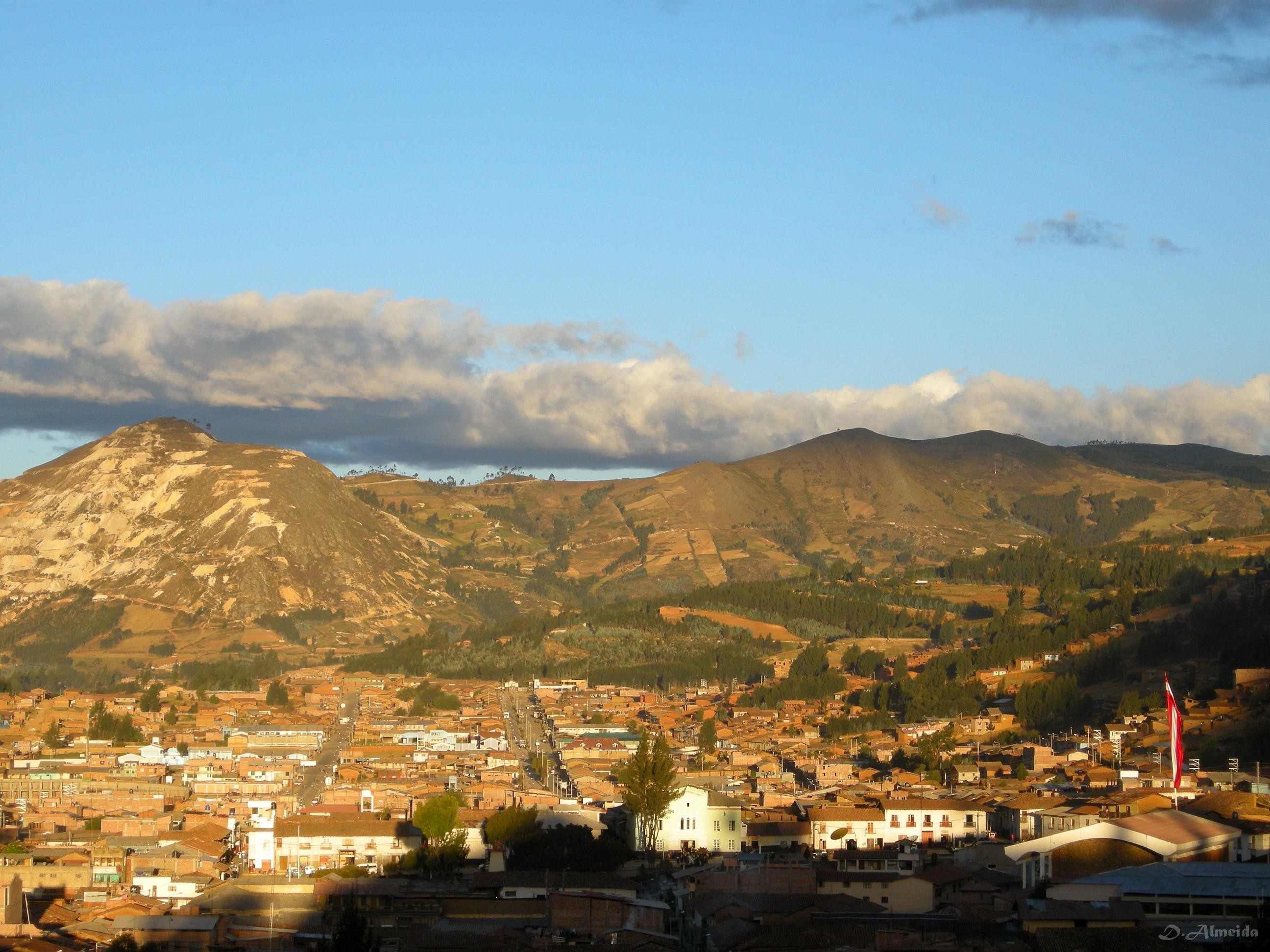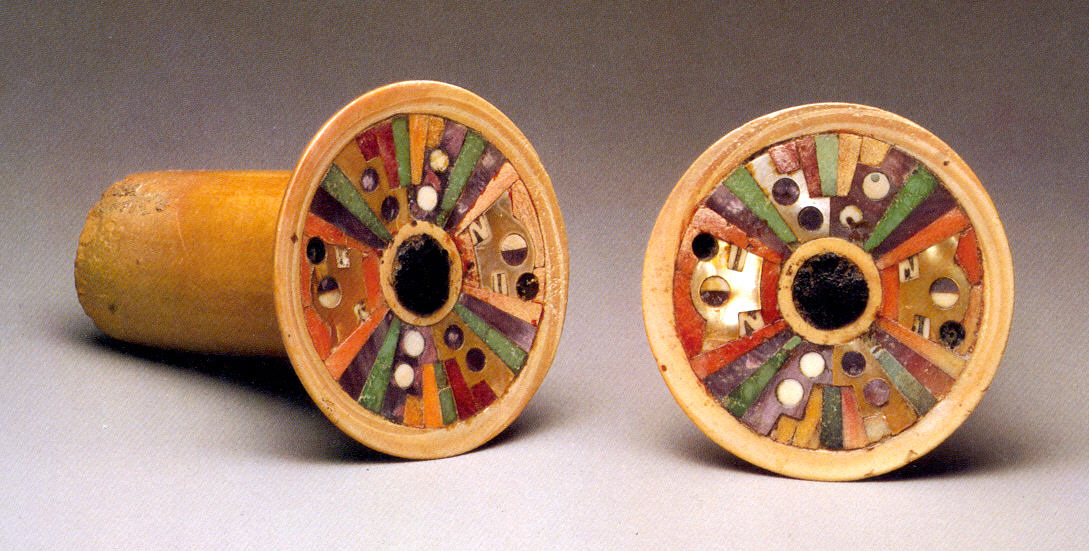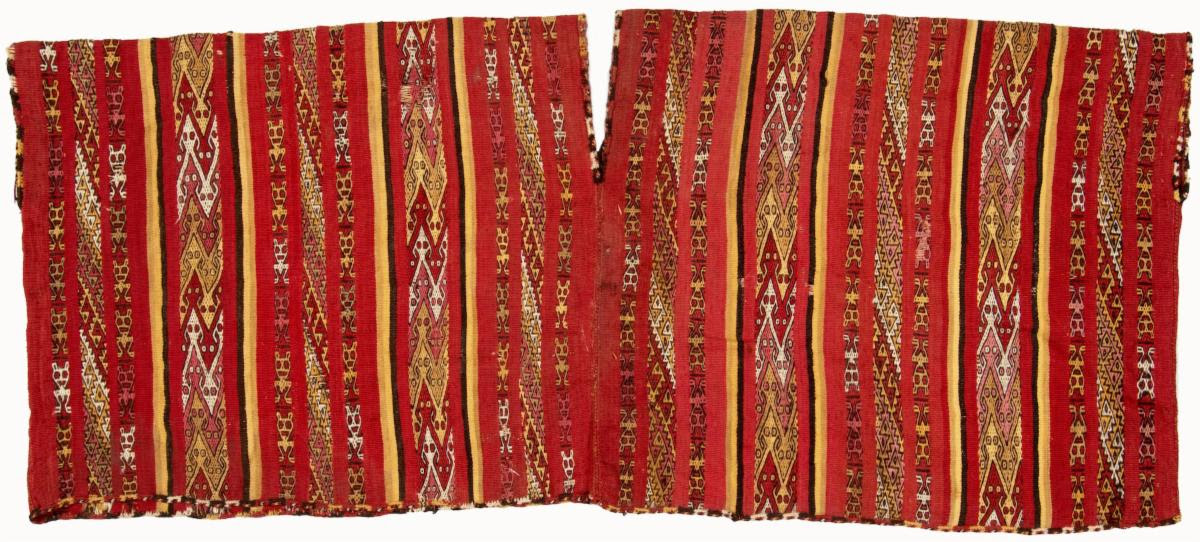|
Viracochapampa
Viracochapampa, Huiracochapampa, or Wiracochapampa (possibly from Quechua ''wiraqucha'': mister, sir, gentleman, god; or '' Wiracocha'': one of the greatest Andean divinities; and ''pampa'': plain)Teofilo Laime Ajacopa, Diccionario Bilingüe Iskay simipi yuyayk'ancha, La Paz, 2007 (Quechua-Spanish dictionary), p. 136 (see ''wiraqucha'') and p. 209 (see ''wiracocha'') is an archaeological site with the remains of a building complex of ancient Peru of pre-Inca times. It was one of the administrative centers of the Wari culture. Viracochapampa is located about 3.5 km north of Huamachuco in the region of La Libertad at an elevation of . Chronology The site was occupied from the late Middle Horizon 1B time to the first decades of period 2A, according to the chronology established by Dorothy Menzel, taking as reference the classic division of Horizons and Intermediate by John Rowe. These correspond to the 7th and 8th centuries of our era. See also *Marcahuamachuco *Chimu Chi ... [...More Info...] [...Related Items...] OR: [Wikipedia] [Google] [Baidu] |
Huamachuco
Huamachuco (possibly from Quechua ''waman'', falcon or variable hawk, and Kulyi ''chuco'', earth or land, "land of falcons") is a town in northern Peru and capital of the province Sánchez Carrión in La Libertad Region. The city is the seat of the Territorial Prelature of Huamachuco. Lake Sausacocha lies to the northeast. About 30 miles away, within the Huamachuco district, is the significant archeological site of Marcahuamachuco. It is a complex of monuments, a prehistoric political and religious center of a culture that thrived 350 CE-1100 CE. The ruins of a Wari city, Viracochapampa, are located 3.5 km north of Huamachuco. Additionally there are many other pre-Columbian ruins around the town. History The area surrounding the town exhibits early occupations of ancient Andean civilizations. Before the advent of the Incas the area was united under a single political entity referred to as the "Señorio de Huamachuco" (Huamachuco lordship) by colonial chronicler ... [...More Info...] [...Related Items...] OR: [Wikipedia] [Google] [Baidu] |
Archaeological Sites In Peru
Archaeological sites in Peru are numerous and diverse, representing different aspects including temples and fortresses of the various cultures of ancient Peru, such as the Moche and Nazca. The sites vary in importance from small local sites to UNESCO World Heritage sites of global importance. Their nature and complexity of the sites vary from small single-featured sites such as pyramids to entire cities, such as Chan Chan and Machu Picchu. Preservation and investigation of these sites are controlled mainly by the Culture Ministry (MINCUL) ( es, Ministerio de Cultura (Perú)). The lack of funding to protect sites and enforce existing laws, results in large scale looting and illegal trading of artifacts. Sites The following is an alphabetical list of archaeological sites in Peru, it lists the main archaeological sites of touristic importance as published by the Ministry of Foreign Commerce and Tourism. Archaeology of PeruArchaeological sites Retrieved March 3, 2009. See also * Cu ... [...More Info...] [...Related Items...] OR: [Wikipedia] [Google] [Baidu] |
Periodization Of Pre-Columbian Peru
This is a chart of cultural periods of Peru and the Andean Region developed by John Rowe and Edward Lanning and used by some archaeologists studying the area. An alternative dating system was developed by Luis Lumbreras and provides different dates for some archaeological finds. Most of the cultures of the Late Horizon and some of the cultures of the Late Intermediate joined the Inca Empire by 1493, but the period ends in 1532 because that marks the fall of the Inca Empire after the Spanish conquest. Most of the cut-off years mark either an end of a severe drought or the beginning of one. These marked a shift of the most productive farming to or from the mountains, and tended to mark the end of one culture and the rise of another. The more recent findings concerning the Norte Chico civilization are not included on this list, as it was compiled before the site at Caral was investigated in detail. See also *Ancient Peru * Amazonas before the Inca Empire *The Pre-Incan Lost Pyram ... [...More Info...] [...Related Items...] OR: [Wikipedia] [Google] [Baidu] |
Wari Culture
The Wari ( es, Huari) were a Middle Horizon civilization that flourished in the south-central Andes and coastal area of modern-day Peru, from about 500 to 1000 AD. Wari, as the former capital city was called, is located north-east of the modern city of Ayacucho, Peru. This city was the center of a civilization that covered much of the highlands and coast of modern Peru. The best-preserved remnants, beside the Wari Ruins, are the recently discovered Northern Wari ruins near the city of Chiclayo, and Cerro Baúl in Moquegua. Also well-known are the Wari ruins of Pikillaqta ("Flea Town"), a short distance south-east of Cuzco ''en route'' to Lake Titicaca. However, there is still a debate whether the Wari dominated the Central Coast or the polities on the Central Coast were commercial states capable of interacting with the Wari people without being politically dominated by them. History Archaeological evidence points toward the Wari empire taking control of a number of small ... [...More Info...] [...Related Items...] OR: [Wikipedia] [Google] [Baidu] |
Quechua Language
Quechua (, ; ), usually called ("people's language") in Quechuan languages, is an Indigenous languages of the Americas, indigenous language family spoken by the Quechua peoples, primarily living in the Peruvian Andes. Derived from a common ancestral language, it is the most widely spoken Pre-Columbian era, pre-Columbian language family of the Americas, with an estimated 8–10 million speakers as of 2004.Adelaar 2004, pp. 167–168, 255. Approximately 25% (7.7 million) of Peruvians speak a Quechuan language. It is perhaps most widely known for being the main language family of the Inca Empire. The Spanish encouraged its use until the Peruvian War of Independence, Peruvian struggle for independence of the 1780s. As a result, Quechua variants are still widely spoken today, being the co-official language of many regions and the second most spoken language family in Peru. History Quechua had already expanded across wide ranges of the central Andes long before the expansion of the ... [...More Info...] [...Related Items...] OR: [Wikipedia] [Google] [Baidu] |
Viracocha
Viracocha is the great creator deity in the pre-Inca and Inca mythology in the Andes region of South America. Full name and some spelling alternatives are Wiracocha, Apu Qun Tiqsi Wiraqutra, and Con-Tici (also spelled Kon-Tiki, the source of the name of Thor Heyerdahl's raft). Viracocha was one of the most important deities in the Inca pantheon and seen as the creator of all things, or the substance from which all things are created, and intimately associated with the sea.:56 Viracocha created the universe, sun, moon, and stars, time (by commanding the sun to move over the sky) and civilization itself. Viracocha was worshipped as god of the sun and of storms. He was represented as wearing the sun for a crown, with thunderbolts in his hands, and tears descending from his eyes as rain. In accord with the Inca cosmogony, Viracocha may be assimilated to Saturn, the "old god", the maker of time or "deus faber" (god maker), corresponding to the visible planet with the longest revolu ... [...More Info...] [...Related Items...] OR: [Wikipedia] [Google] [Baidu] |
Archaeological Site
An archaeological site is a place (or group of physical sites) in which evidence of past activity is preserved (either prehistoric or historic or contemporary), and which has been, or may be, investigated using the discipline of archaeology and represents a part of the archaeological record. Sites may range from those with few or no remains visible above ground, to buildings and other structures still in use. Beyond this, the definition and geographical extent of a "site" can vary widely, depending on the period studied and the theoretical approach of the archaeologist. Geographical extent It is almost invariably difficult to delimit a site. It is sometimes taken to indicate a settlement of some sort although the archaeologist must also define the limits of human activity around the settlement. Any episode of deposition such as a hoard or burial can form a site as well. Development-led archaeology undertaken as cultural resources management has the disadvantage (or the ben ... [...More Info...] [...Related Items...] OR: [Wikipedia] [Google] [Baidu] |
Ancient Peru
The Andean civilizations were complex societies of many cultures and peoples mainly developed in the river valleys of the coastal deserts of Peru. They stretched from the Andes of southern Colombia southward down the Andes to Chile and northwest Argentina. Archaeologists believe that Andean civilizations first developed on the narrow coastal plain of the Pacific Ocean. The Caral or Norte Chico civilization of Peru is the oldest known civilization in the Americas, dating back to 3200 BCE. Despite severe environmental challenges, the Andean civilizations domesticated a wide variety of crops, some of which became of worldwide importance. The Andean civilizations were also noteworthy for monumental architecture, textile weaving, and many unique characteristics of the societies they created. Less than a century prior to the arrival of the Spanish conquerors, the Incas, from their homeland centered on the city of Cusco, united most of the Andean cultures into one single empire that ... [...More Info...] [...Related Items...] OR: [Wikipedia] [Google] [Baidu] |
John Howland Rowe
John Howland Rowe (June 10, 1918 – May 1, 2004) was an American archaeologist and anthropologist known for his extensive research on Peru, especially on the Inca civilization. Rowe studied classical archaeology at Brown University (1935–1939) and anthropology at Harvard University (1939–1941). After graduating he traveled to Peru where he undertook archaeological research and taught until 1943. Between 1944 and 1946 he served as sergeant in the U.S. Combat Engineers in Europe. From 1946 to 1948 he studied the Guambía people in Colombia for the Smithsonian Institution, returning briefly to Harvard in 1946 to complete his doctorate in Latin American history and anthropology in 1947. In 1948 he started teaching at the University of California, Berkeley The University of California, Berkeley (UC Berkeley, Berkeley, Cal, or California) is a public land-grant research university in Berkeley, California. Established in 1868 as the University of California, it is the state ... [...More Info...] [...Related Items...] OR: [Wikipedia] [Google] [Baidu] |
La Libertad Region
La Libertad (; in English: ''The Liberty'') is a region in northwestern Peru. Formerly it was known as the Department of La Libertad ('). It is bordered by the Lambayeque, Cajamarca and Amazonas regions on the north, the San Martín Region on the east, the Ancash and Huánuco regions on the south and the Pacific Ocean on the west. Its capital is Trujillo, which is the nation's third biggest city. The region's main port is Salaverry, one of Peru's largest ports. The name of the region is Spanish for "freedom" or "liberty"; it was named in honor of the Intendencia of Trujillo's proclaiming independence from Spain in 1820 and fighting for that. It is the ninth smallest department in Peru, but it is also its second most populous department after Piura and its second most densely populated department after Lambayeque. Name During the viceroyalty of Peru, the La Libertad region, together with the present-day regions of Lambayeque, Piura and Tumbes regions in Peru, and Guayaquil ... [...More Info...] [...Related Items...] OR: [Wikipedia] [Google] [Baidu] |
Chimu
Chimor (also Kingdom of Chimor or Chimú Empire) was the political grouping of the Chimú culture. The culture arose about 900 AD, succeeding the Moche culture, and was later conquered by the Inca emperor Topa Inca Yupanqui around 1470, fifty years before the arrival of the Spanish in the region. Chimor () was the largest kingdom in the Late Intermediate Period, encompassing 1,000 kilometres (620 mi) of coastline. The Chimor dynasty begins with two origin myths about the Naymlap dynasty that were orally passed down and conserved. The first legend begins with the arrival of Taycanamo in the Moche Valley after he crossed an unknown sea on a balsa raft. From there his descendants would conquer surrounding areas starting with his son Guacricaur. Guacricaur integrated Chimú reign over the lower valley and Ñançenpinco, Taycanamo's grandson would expand the kingdom by conquering the upper valley. Ñançenpinco began to further expansion both north and south of the Moche Va ... [...More Info...] [...Related Items...] OR: [Wikipedia] [Google] [Baidu] |
Moche (culture)
The Moche civilization (; alternatively, the Mochica culture or the Early, Pre- or Proto-Chimú) flourished in northern Peru with its capital near present-day Moche, Trujillo, Peru from about 100 to 700 AD during the Regional Development Epoch. While this issue is the subject of some debate, many scholars contend that the Moche were not politically organized as a monolithic empire or state. Rather, they were likely a group of autonomous polities that shared a common culture, as seen in the rich iconography and monumental architecture that survives today. Background Moche society was agriculturally based, with a significant level of investment in the construction of a sophisticated network of irrigation canals for the diversion of river water to supply their crops. Their artifacts express their lives, with detailed scenes of hunting, fishing, fighting, sacrifice, sexual encounters, and elaborate ceremonies. The Moche are particularly noted for their elaborately painted ceramic ... [...More Info...] [...Related Items...] OR: [Wikipedia] [Google] [Baidu] |


.png)



.jpg)
